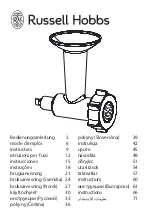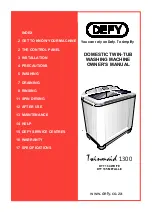
9. TROUBLESHOOTING
WARNING!
Refer to Safety chapters.
9.1 What to do if...
Problem
Possible cause
Solution
The appliance does not
operate.
The appliance is switch‐
ed off.
Switch on the appliance.
The mains plug is not
connected to the mains
socket correctly.
Connect the mains plug to
the mains socket correctly.
There is no voltage in the
mains socket.
Connect a different electrical
appliance to the mains sock‐
et. Contact a qualified elec‐
trician.
The circuit breaker trip‐
ped or a blown fuse.
Turn on the circuit breaker or
change the fuse.
The compressor operates
continually.
Temperature is set incor‐
rectly.
Refer to "Operation" chapter.
The room temperature is
too high.
Refer to "Installation" chap‐
ter.
The door is opened too
often.
Do not keep the door open
longer than necessary.
The door is not closed
correctly.
Refer to "Closing the door"
section.
The light does not work.
The appliance is not
plugged in.
Connect the appliance.
The circuit breaker trip‐
ped or a blown fuse.
Turn on the circuit breaker or
change the fuse.
The lamp is defective.
Contact the service.
The light button is not op‐
erating.
Contact the service.
Too much vibration.
The appliance is not sup‐
ported properly.
Check if the appliance
stands stable.
The appliance is noisy.
The appliance is not sup‐
ported properly.
Check if the appliance
stands stable.
Water flows on the rear
plate of the appliance.
During the automatic de‐
frosting process, frost
melts on the rear plate.
This is correct.
ENGLISH
41
Summary of Contents for EWUS020B5B
Page 271: ......
















































